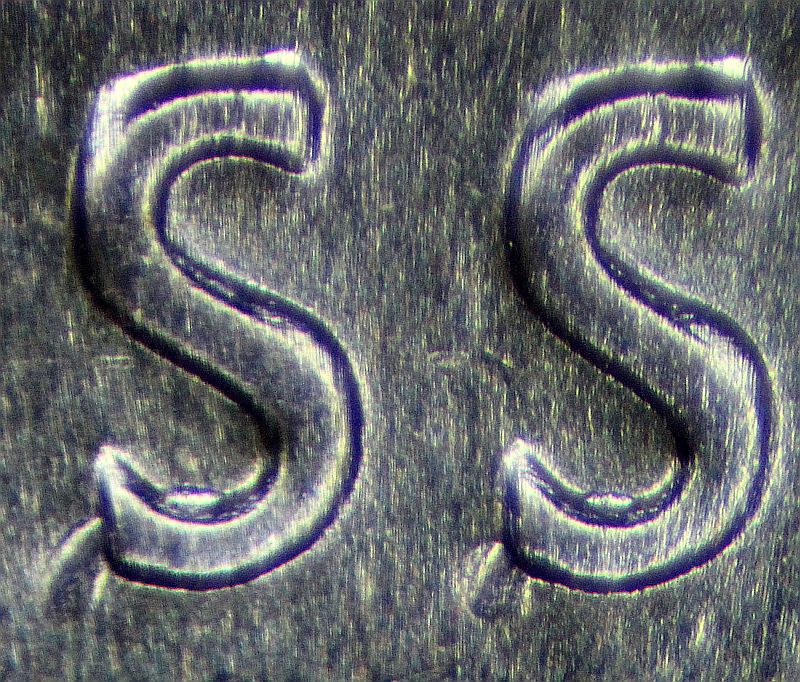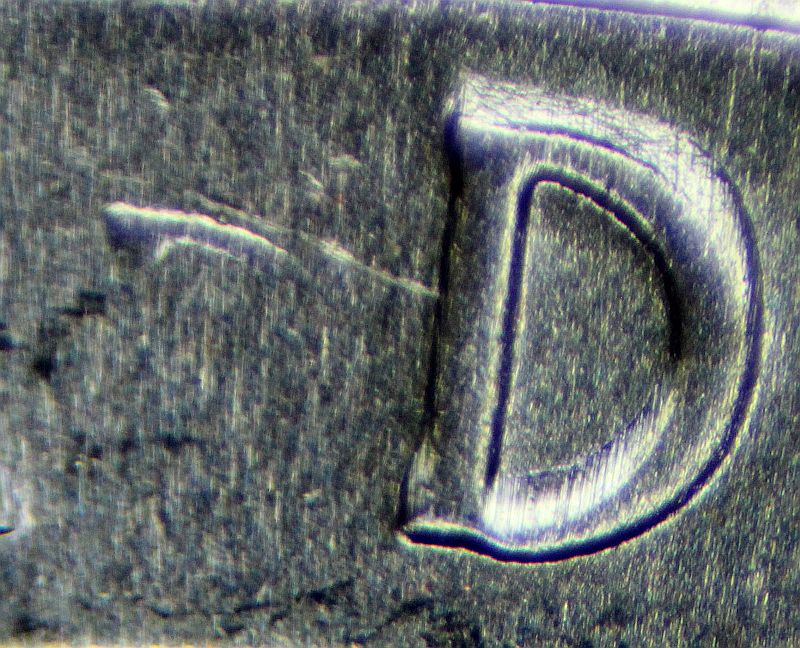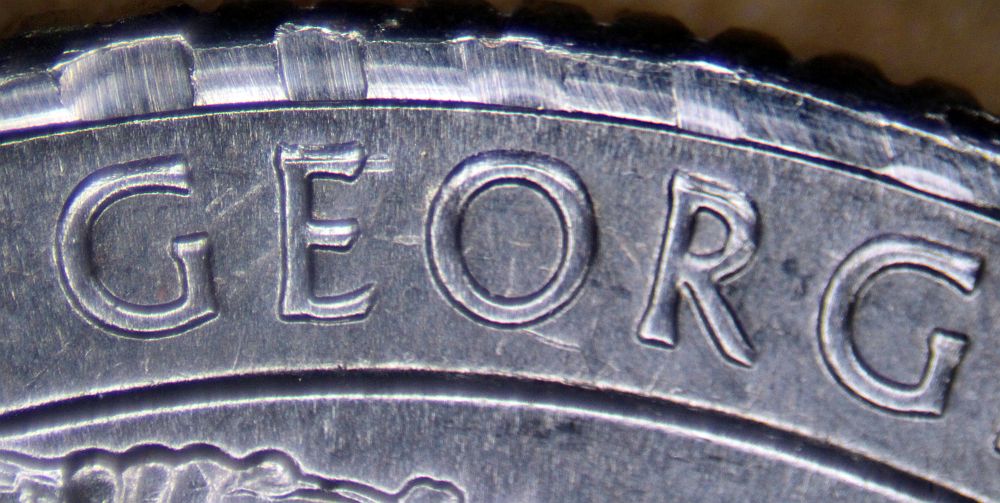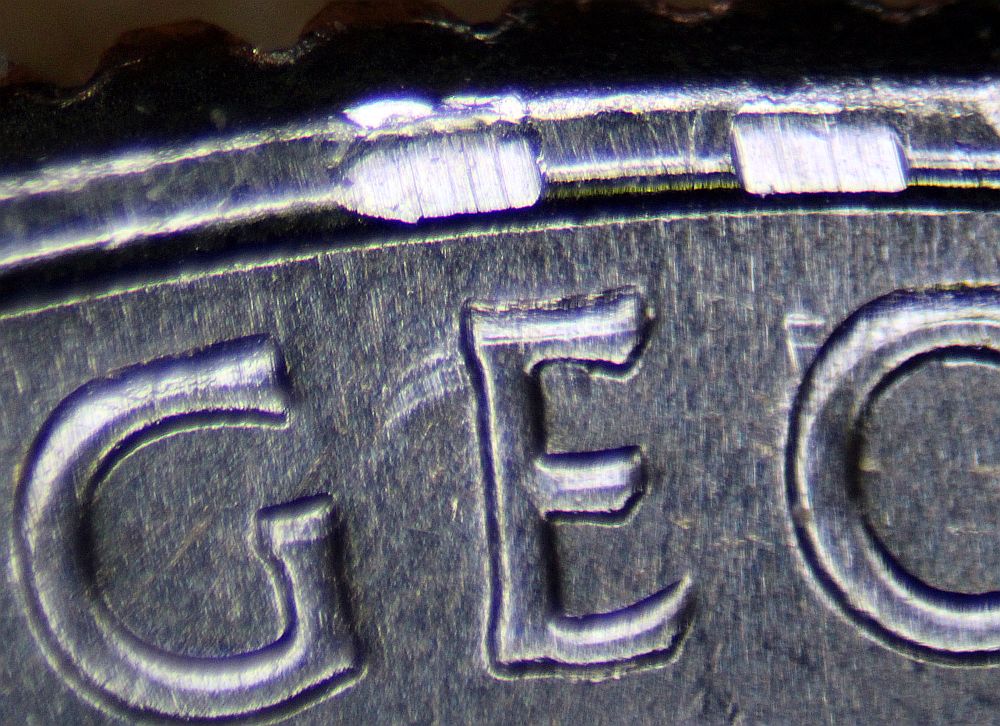Part VIII. Post-Strike Striking Chamber Mishaps:
Post-Strike Die Contact:
Ejection impact doubling
Definition: Ejection impact doubling (EID) is a type of post-strike design transfer that occurs when a newly-struck coin is propelled or thrust into the face of the retreating hammer die. It appears on Sacagawea dollars struck in the year 2000 and on several 2017-P America The Beautiful quarter dollars. Almost all the Sacagawea dollars are from the Philadelphia Mint. Many different die pairs are represented. Affected specimens show scattered design elements on the areas of highest relief on the obverse face. The most iconic feature is a disembodied iris and pupil from Sacagawea’s right-positioned eye (the left eye from her perspective). The “extra eye” is most often seen between Sacagawea’s eyebrows and along the bridge of her nose. It has, however, turned up in other areas.
Ejection impact doubling is not related to, and should not be confused with, any form of machine doubling.
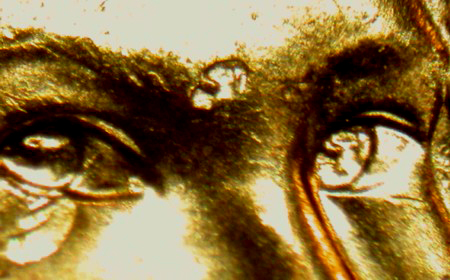
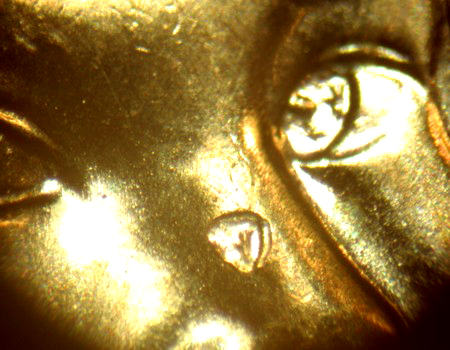
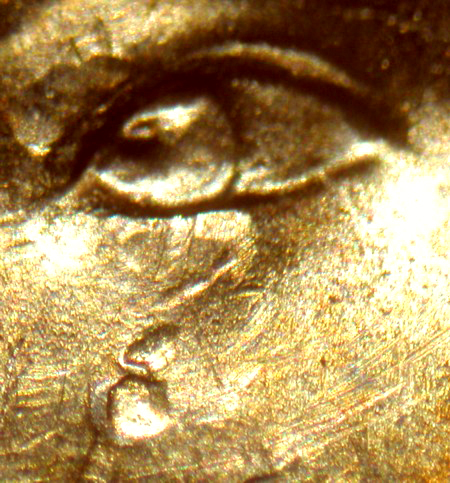
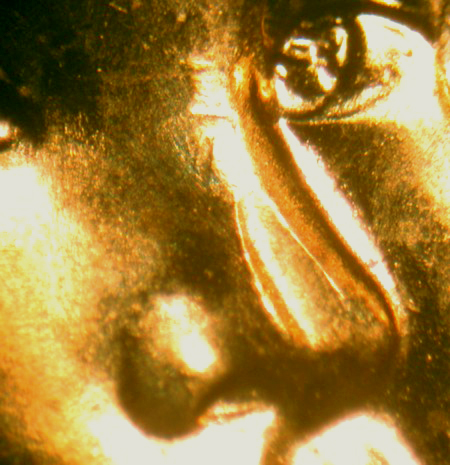
Ejection impact doubling appears during a single year within the America The Beautiful series of quarter dollars. Duplicated incuse peripheral letters appear on the reverse face of the 2017-P Frederick Douglass 25c, the 2017-P George Rogers Clark 25c, and the 2017-P Ellis Island 25c. More than one duplicate set of letters may appear. Within a single coin, the extra letters may be shifted in more than one direction relative to the normal letters. Rotational and medial displacement can be severe. The corresponding raised letters on the hammer (reverse) die face are the features most likely to make light contact with a coin that has been launched upward or a coin that has been thrust upward by the anvil die in preparation for ejection. The anvil die or the hammer die would presumably have to be mistimed for contact to occur.
Most of the examples were discovered by Bill Wood, including all those shown here.
In this 2017-P Frederick Douglass quarter dollar, duplicate versions of each S of DOUGLASS are shifted a full letter length (1.0 mm) toward the coin’s center.
In a second Douglass quarter dollar from the same die pair, the D of DOUGLASS is shifted down 0.4 mm and leftward 0.8mm.
In this 2017-P George Rogers Clark quarter dollar, horribly smeared copies of the first five letters of GEORGE are located on the design rim.
In a second Clark quarter dollar, two smeared copies of the G of GEORGE are each shifted 1 ½ letters to the right (1.2mm). One copy is located on the design rim, while the second copy is located slightly south of the normal letter.
